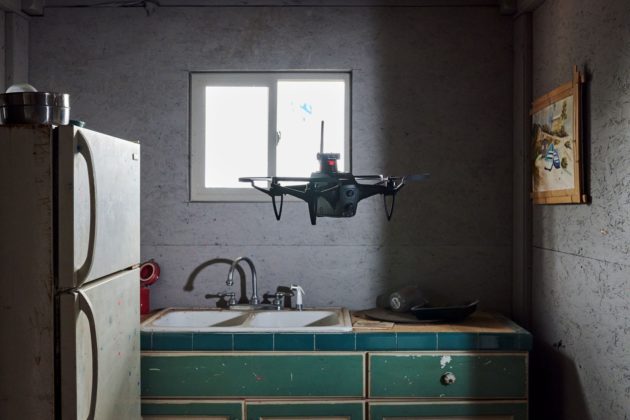On the battlefield, any doorway can be a death trap. A special ops vet, and his businessman brother, have built an AI to solve that problem.
PHOTOGRAPH: JOHN FRANCIS PETERS
THEY CALL IT the fatal funnel. When training for urban combat, they teach you it’s any doorway you have to cross not knowing what’s on the other side. Fifteen years ago, when I returned home after fighting in Iraq, a friend asked me to describe the bravest thing I saw anyone do. I had led a Marine platoon in the Second Battle of Fallujah, in 2004, and had seen plenty of heroism—Marines dragging their wounded off machine-gun-swept streets, or fighting room to room to recover a comrade’s body. But none of these compared to the cumulative heroism of the 19- and 20-year-old infantrymen who placed their bodies across that fatal funnel every day. Clearing the enemy from the city, house by house, was a game of Russian roulette played on a grand scale. You never knew who might be waiting on the other side of the door.
In the early days of the battle, we cleared houses by sending Marines through the front door and then proceeding room to room. Soon, however, we discovered this was too dangerous. Was any Marine’s life worth a building? We modified our tactics, so that if we sent a Marine through the front door and he found an insurgent inside, we retreated and made no effort to clear the structure. Instead we brought up an armored bulldozer or tank and leveled it.
“HOLD THE BUTTON and wait for the green light,” Brandon tells me. We’re near the headquarters of Shield AI at an urban training facility that approximates conditions in an Afghan village. The two of us stand, one behind the other, outside several shipping containers welded together—“a multistory house”—as though we are about to make entry across its fatal funnel. A steering-wheel-sized quadcopter rests on my palm. I hold the button on its side as instructed. A green light turns on. The rotors of the quadcopter begin to buzz menacingly as the drone gently lifts off. Brandon opens the door in front of us. With a predatory swiftness, the drone darts inside the house. No human is controlling it.
“The noise is pretty creepy,” I say, as we listen to the drone humming between open rooms.
Read this whole article at Wired
https://www.wired.com/story/shield-ai-quadcopter-military-drone/


Leave a Reply
You must be logged in to post a comment.